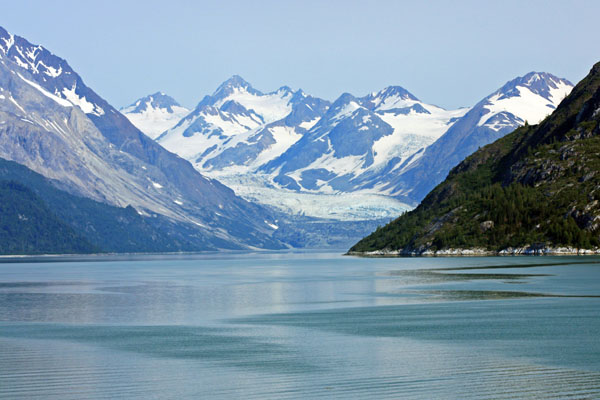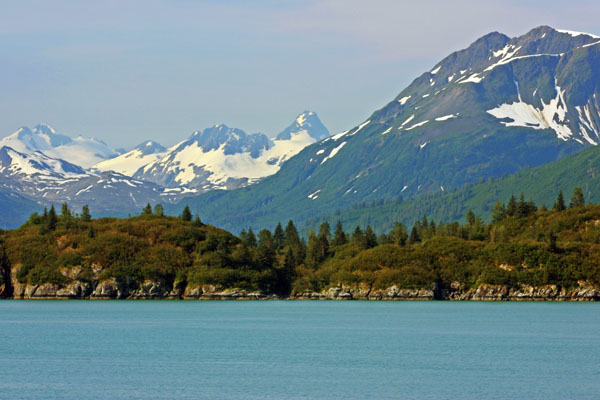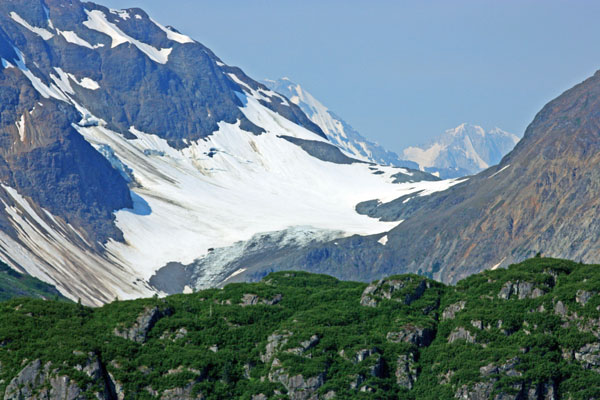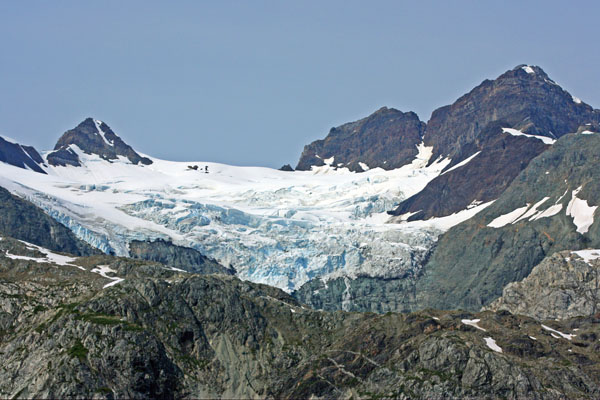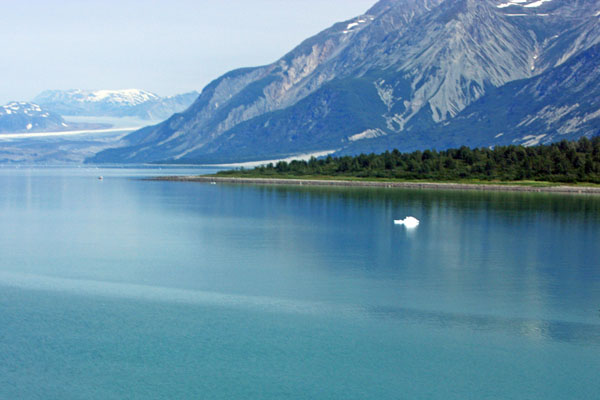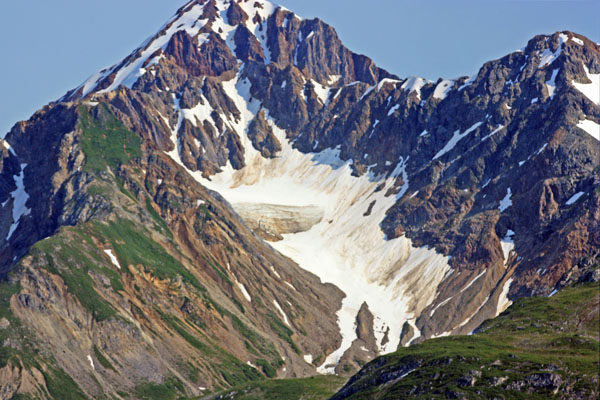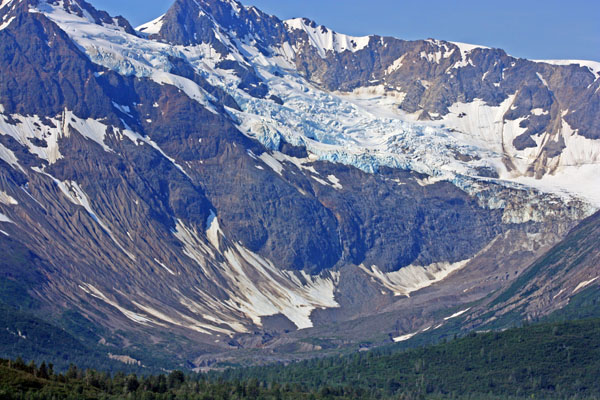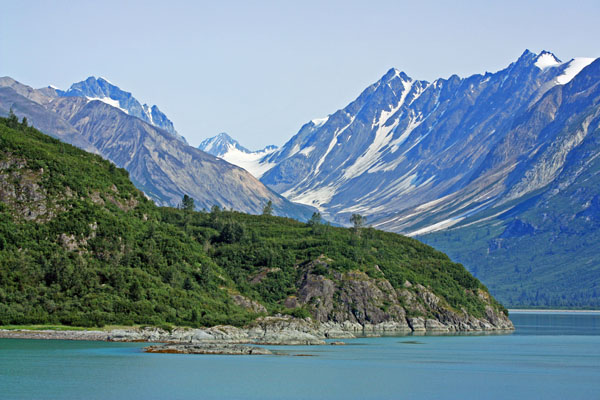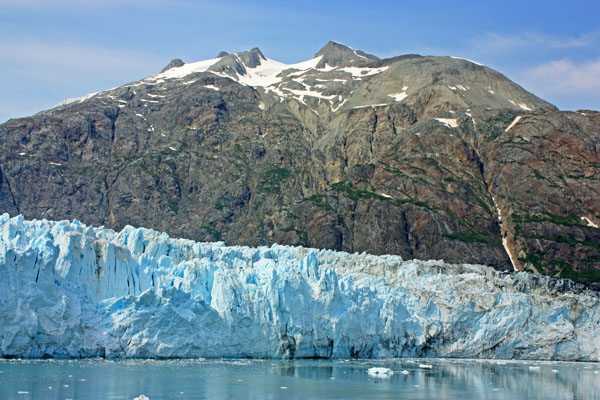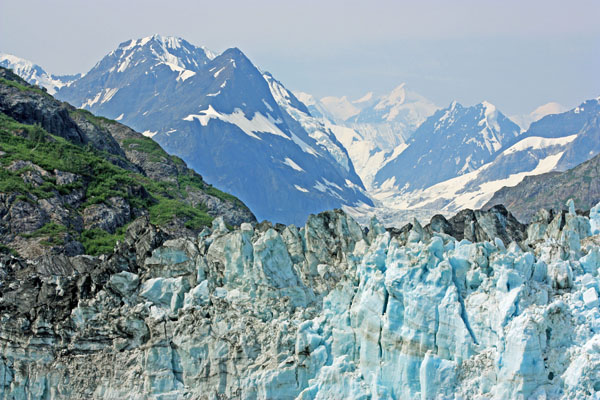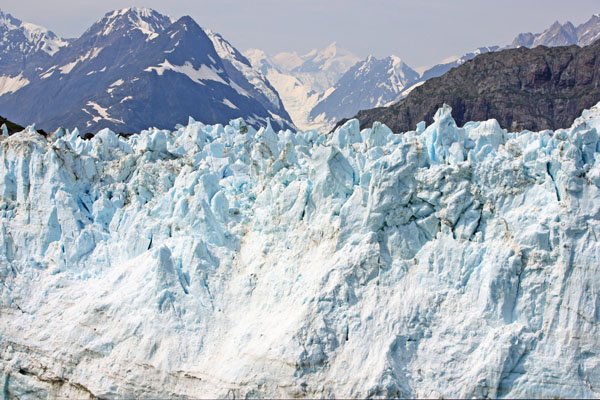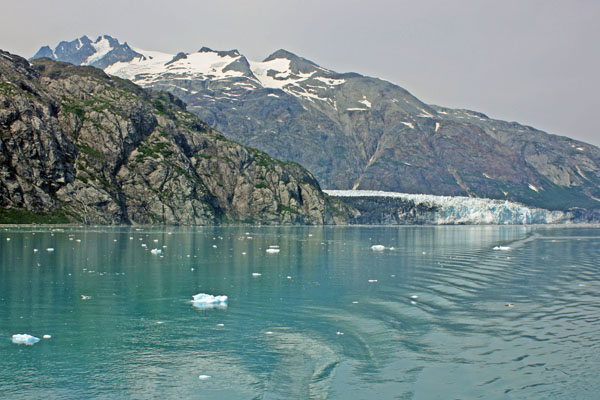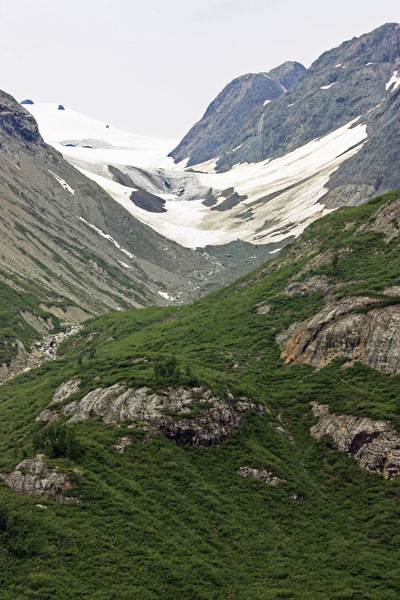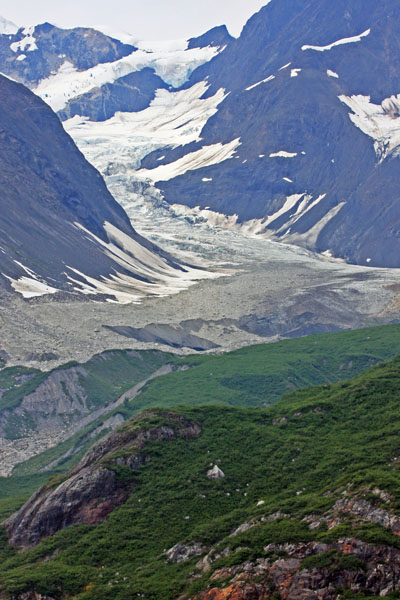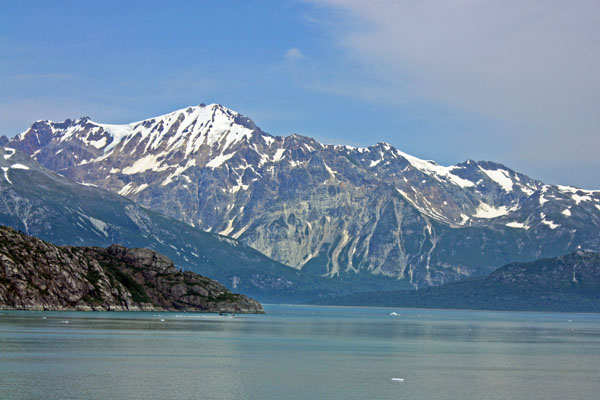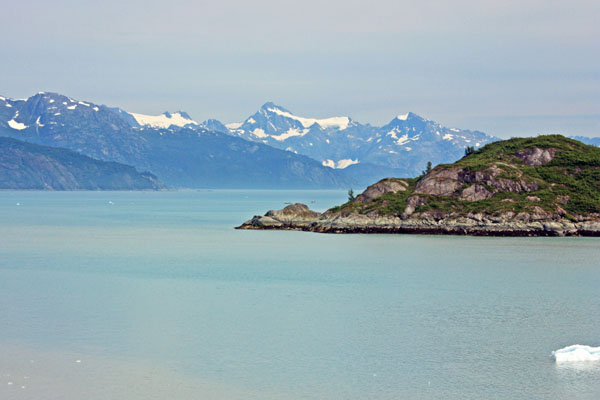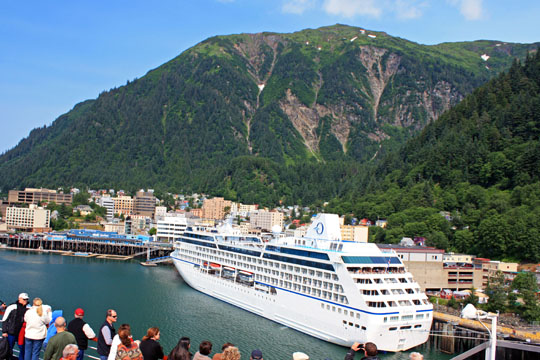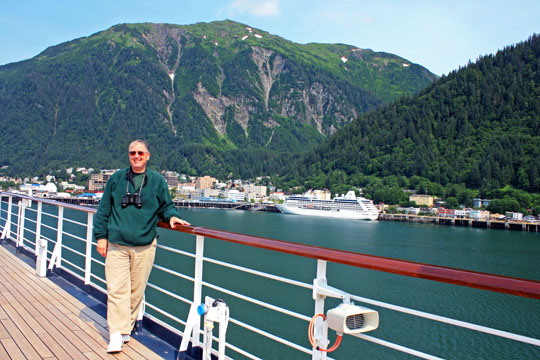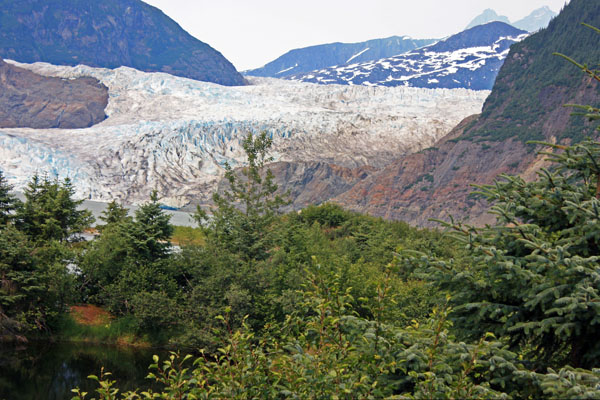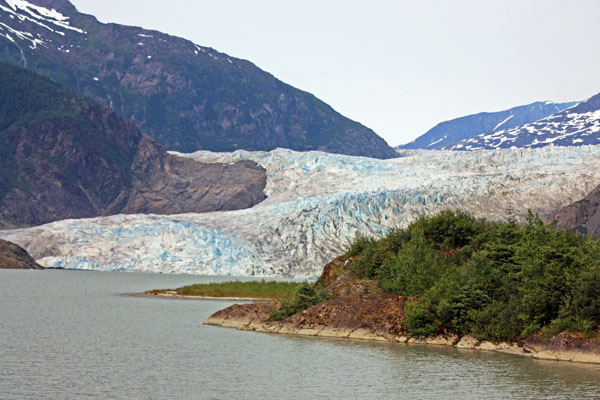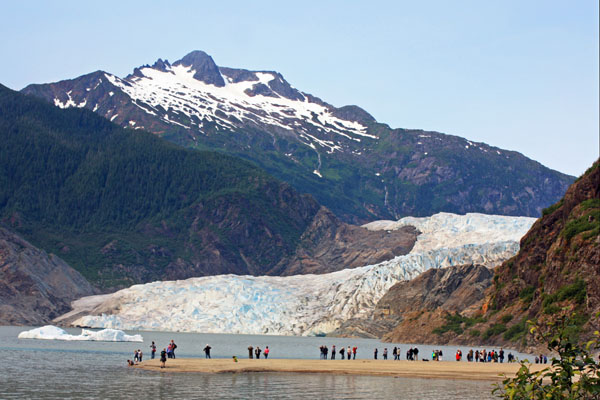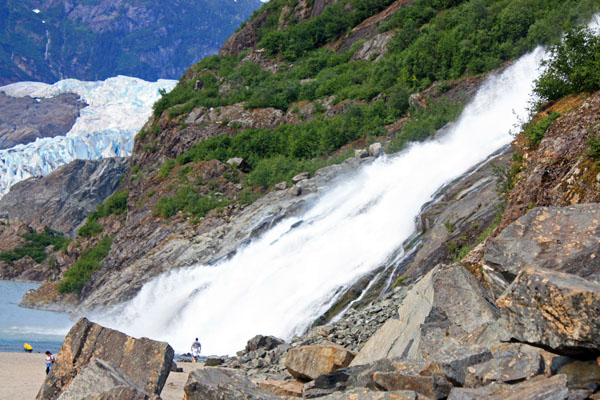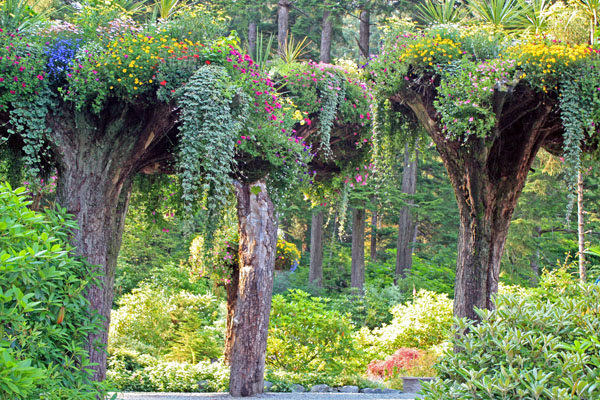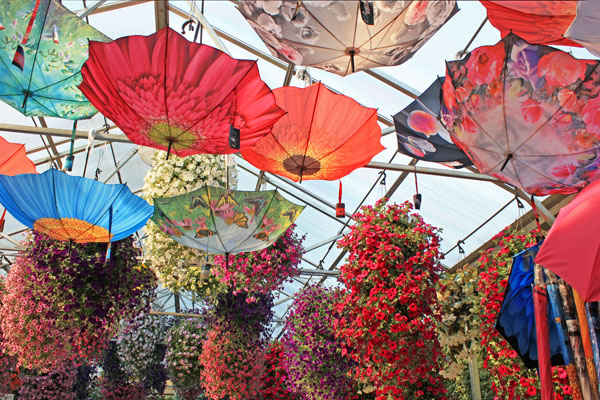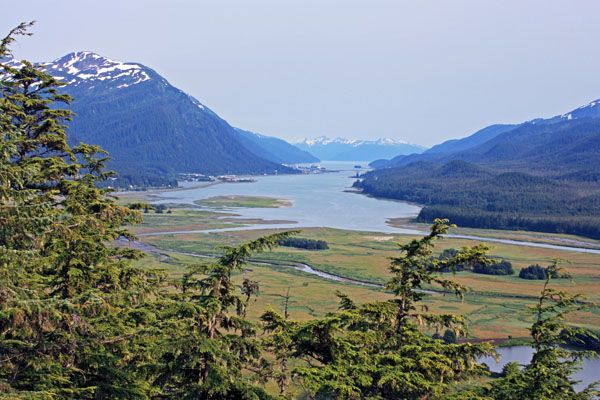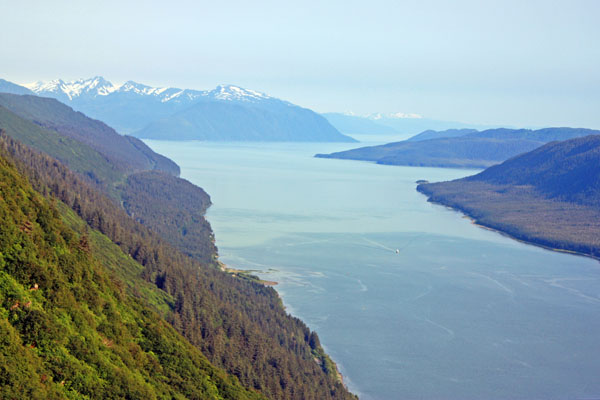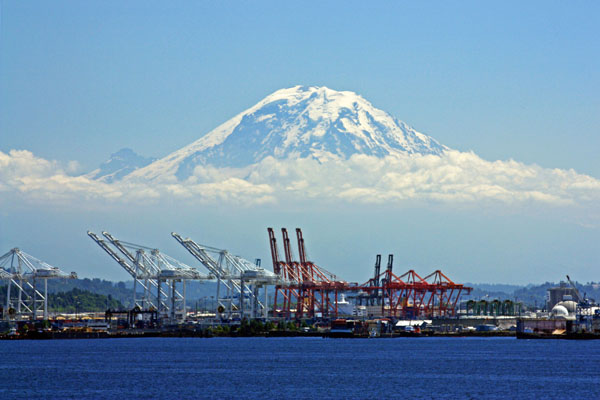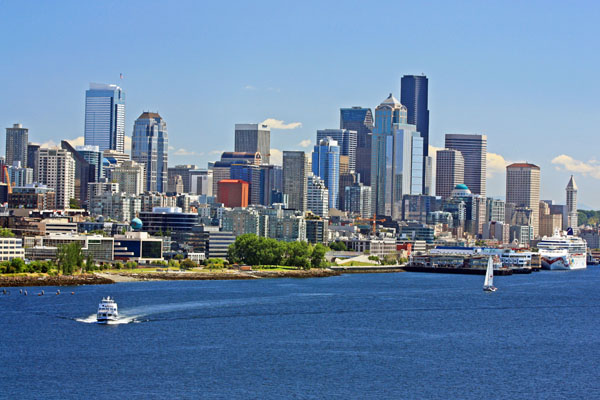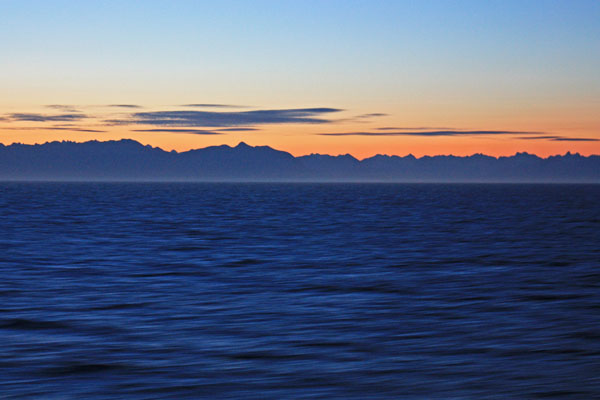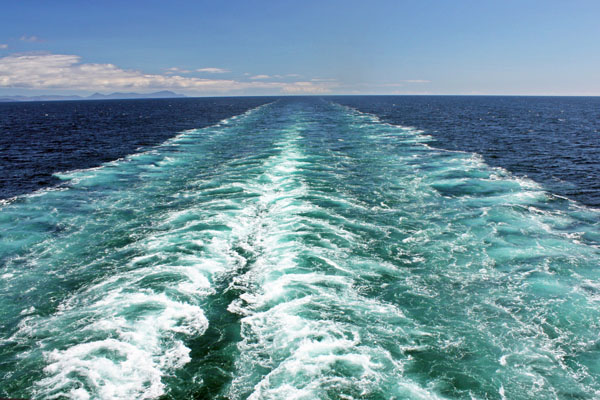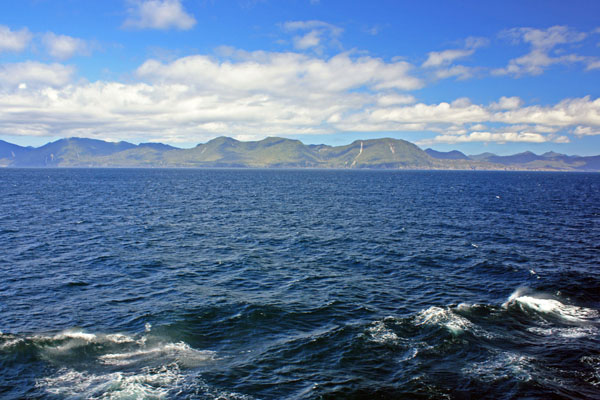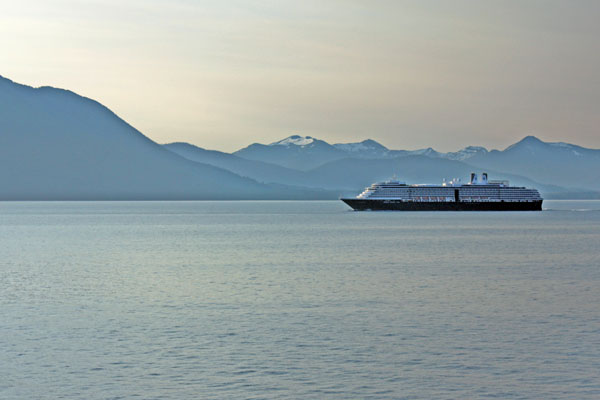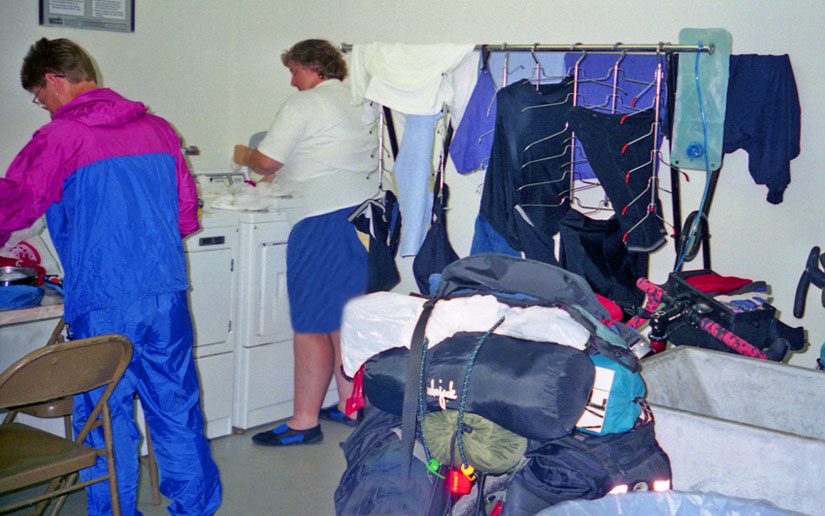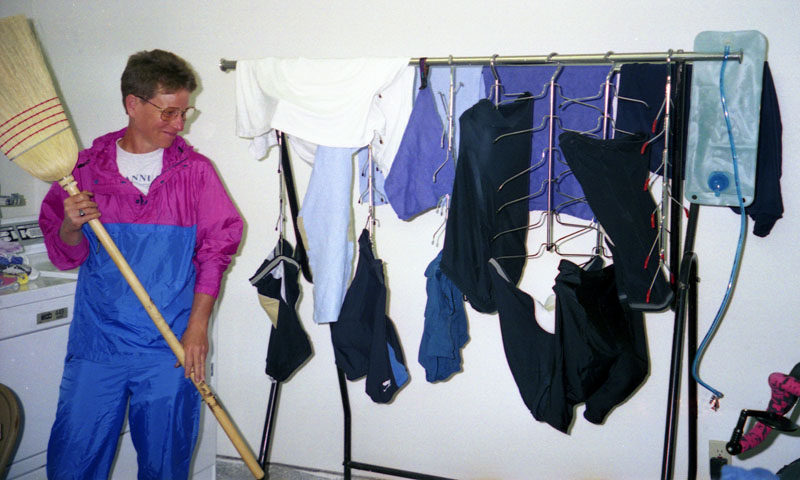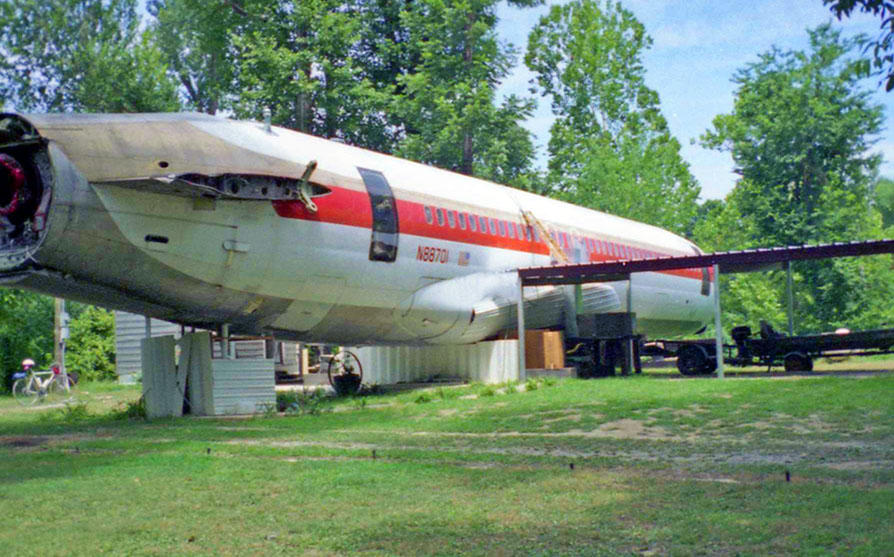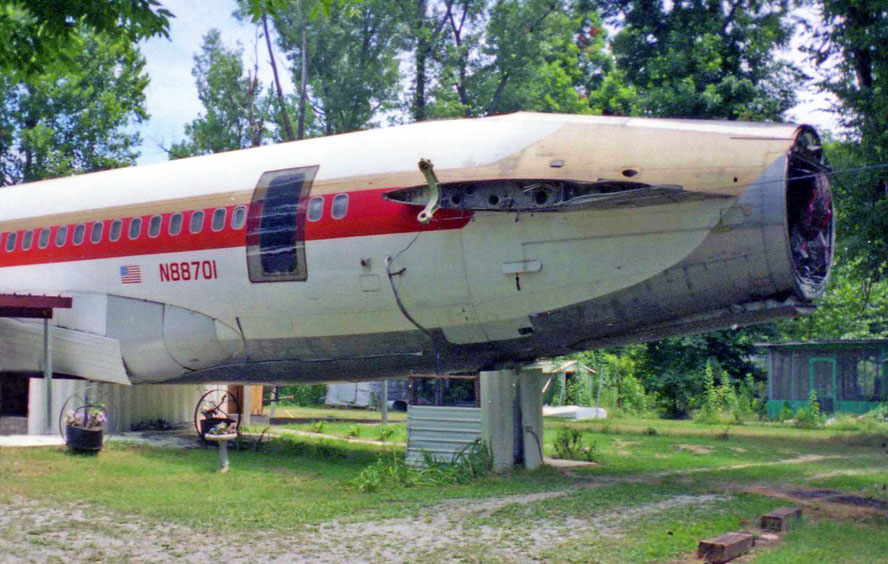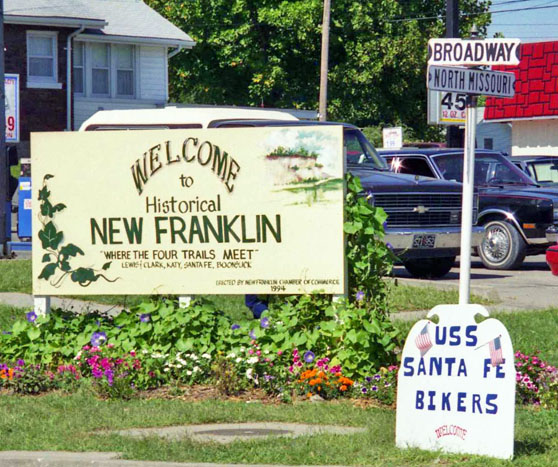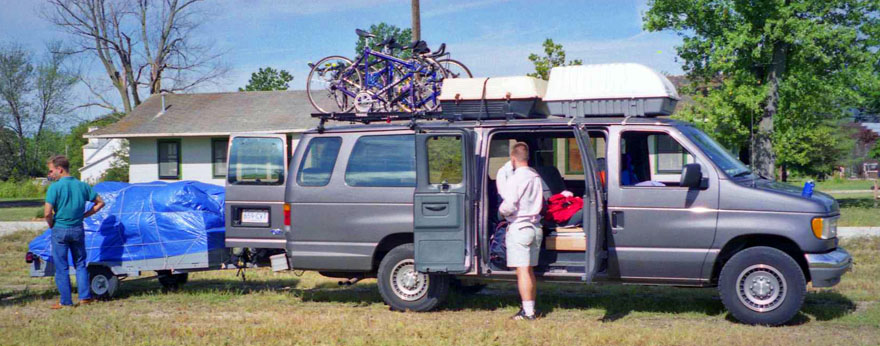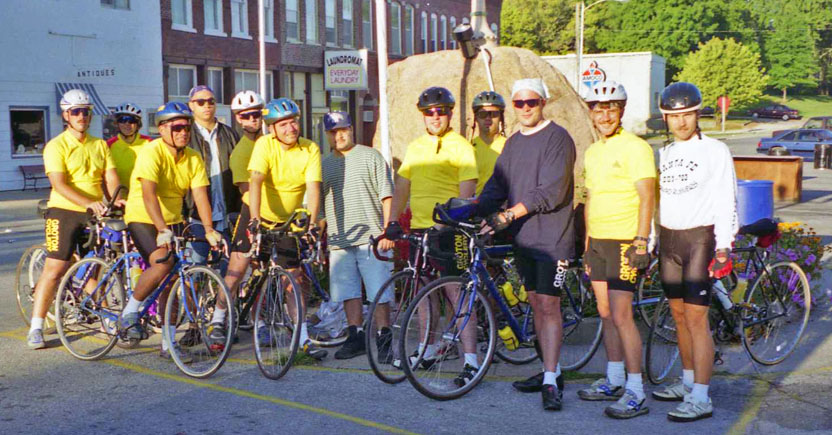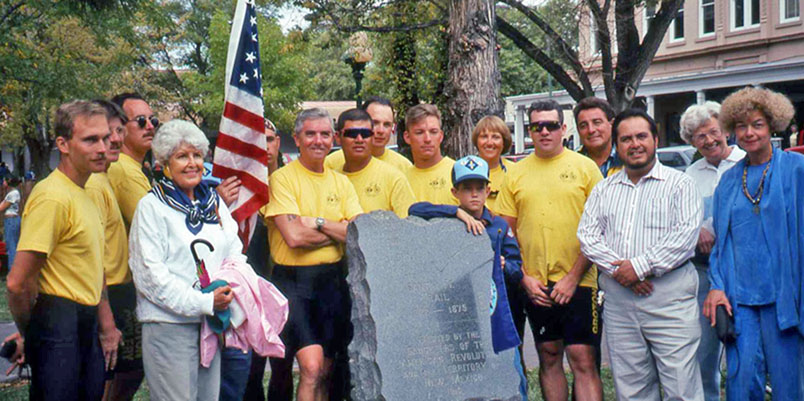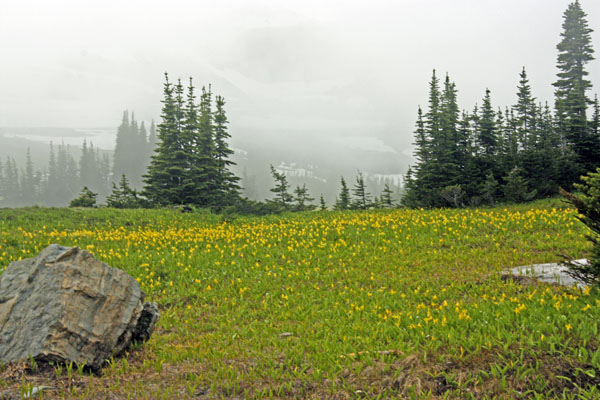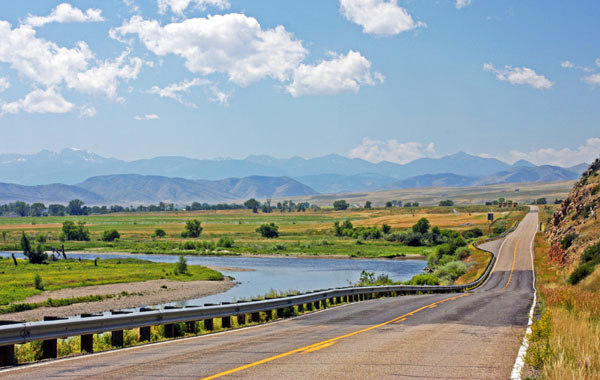August 12, 2013
I awoke to another magnificent Alaskan day. The sun was out in full force and it was only 4:45 a.m. Now that’s early for me, but this time of year the sun rises at 4 a.m. and sets at 10 p.m. giving Alaskans a long summer day. I was too excited to sleep any longer because it was the day we would explore Glacier Bay.
Glacier Bay National Monument was established in 1925 and renamed Glacier Bay National Park and Preserve in 1980. The park encompasses 3.3 million acres and Glacier Bay lies in the middle of the huge preserve. Its many inlets and fjords contain sixteen active tidewater glaciers fueled by enough snow to flow out of the mountains and down to the sea.
At 6:45 a.m., we entered Glacier Bay and a few minutes later stopped at Bartlett Cove (Park Headquarters), where two park rangers boarded the ship to spend the day as our guides. Throughout our stay in Glacier Bay, they provided informative commentary as we slowly made our way fifty-five miles north to the tidewater glaciers.
The captain opened up the bow of the ship on three levels so we could have a sweeping view of the bay. It was breezy and cold on the bow so most of us donned hats and winter parkas. Along with a warming sun, there was a coffee and hot chocolate station set up on deck to help take the chill off.
As we glided through the green-blue waters of Glacier Bay, the reflection of the ice-capped mountains in the still water lent an air of solitude and tranquility to our visit. We saw wildlife all around us. Humpback whales waved to us with their tails as they dove in and out of the water. High-soaring bald eagles glided through the air scanning for prey. At one point, I saw a bald eagle float by on an iceberg. What a cool way to cruise!
At 11:15 a.m., we arrived at the head of Tarr Inlet. Here we explored Margerie Glacier, named for the French geographer and geologist Emmanuel de Margerie who visited the Glacier Bay in 1913. Inside the inlet, calm blue-green waters were dotted with chunks of ice. The massive glacier towered 250 feet above us. The mile-wide ice flow stretched twenty-one miles from the south slope of Mount Root on the Alaska-Canada border to Tarr Inlet.
Our ship slowed and coasted within a quarter-mile of the massive ice face. Passengers lined the bow with binoculars and cameras to capture a view of the towering ice queen. Its sheer green and blue walls, smudged by black debris carried down from the mountainside, towered from the water’s surface. The jagged edges left in the top of the glacier from pieces falling away, formed intricate shapes and patterns.
The ship spent about a full hour in front of the Margerie Glacier. The captain allowed plenty of time for everyone on board to see the glacier by turning the ship slowly so that all sides faced the glacier for a considerable amount of time.
As we crowded the rails, a hush came over the ship. Suddenly, we heard a loud crack, and then a noise that sounded like a thunderclap. The silence was shattered as a chunk of ice crumbled and slowly fell into the water. Margerie Glacier was actively calving or breaking off ice chunks. As chunks continued to fall, Kittiwake gulls circled over pools of ice looking for fish.
At 1 p.m., we left Tarr Inlet and spent the rest of the afternoon cruising south through Glacier Bay. We passed by John Hopkins Inlet which is home to nine glaciers. As I looked down the inlet with all of its magnificent icy rivers, I saw snow-covered Mount Fairweather in the distance. Hanging glaciers on mountainsides glistened in the afternoon sun. Sparkling icebergs floated by in calm, icy waters. I hated to leave such a magical place.
As we cruised out of Glacier Bay, I was inspired by its rugged beauty. I was also humbled and in awe of its snow covered landscapes and icy sculptures. Only God could have created such a masterpiece.
Fair winds,
Kathy
